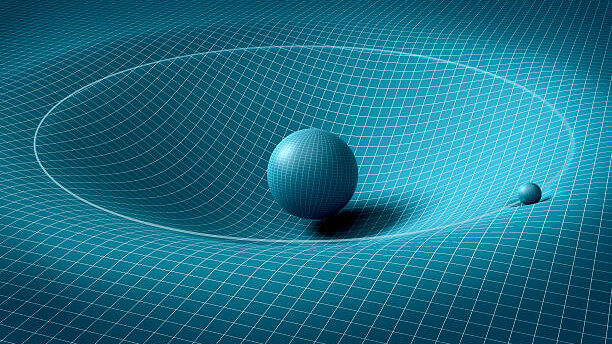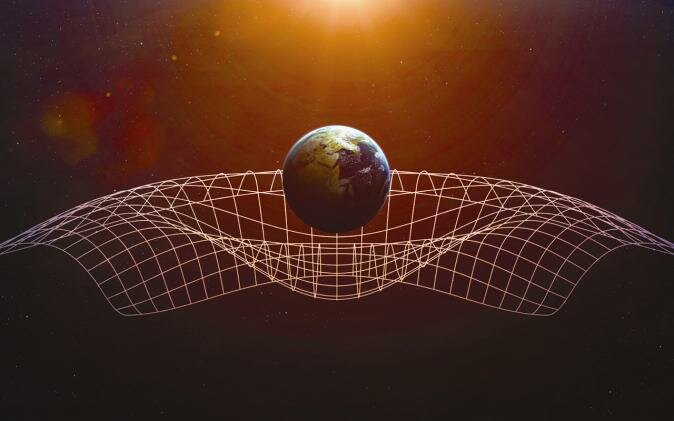Gravity: that ever-present force that keeps your coffee cup from floating away and ensures your toast lands butter-side down. But have you ever wondered why gravity works the way it does? It’s not just the playground antics of physics—it’s a mind-bending phenomenon that shaped our universe. Let’s take a whimsical journey through the gravitational mysteries that left Newton scratching his head and made Einstein a scientific rock star.
When Things Fall… Because They Must
We’ve all dropped something at the worst possible moment, haven’t we? Gravity doesn’t care about your timing—it’s always there, pulling things down. Isaac Newton, back in the 17th century, saw this relentless force in action and came up with a groundbreaking idea: gravity is a universal force proportional to the product of two masses and inversely proportional to the square of their distance. Brilliant, right? It explained why the planets orbit the Sun and why apples fall to the ground.
But there was one problem. Newton’s theory treated gravity as an invisible string pulling objects together instantly, no matter how far apart they were. This “instantaneous action at a distance” didn’t sit well with physicists after Einstein came along. Enter the 20th century and the dawn of relativity.
Einstein’s Revolution: A Curvy Universe
Albert Einstein took one look at Newton’s straight-laced gravity and said, “Not so fast!” In his General Theory of Relativity, Einstein introduced a radical concept: space and time are part of a flexible, four-dimensional fabric called spacetime. And this fabric can bend, twist, and warp under the influence of mass and energy.
To understand Einstein’s perspective, imagine a group of kids playing marbles in a Berlin courtyard. Newton, observing from above, might think the marbles’ erratic paths are due to mysterious forces—maybe magnetism. Einstein, on the other hand, joins the kids on the ground and immediately sees the truth: the marbles’ paths are determined by the uneven ground.

In Einstein’s universe, mass distorts spacetime, creating a “dent” that influences how objects move. This is why planets orbit the Sun and why you can’t seem to hold onto your phone—it’s all spacetime geometry at work.
A Trampoline for the Cosmos
Think of spacetime like a trampoline. Place a bowling ball in the center (that’s the Sun), and it creates a dip. Smaller objects, like marbles (or planets), roll around the dip in circular orbits. Now imagine every celestial body, from stars to moons, has its own tiny dip within larger dips. Even the Earth and its Moon are locked in a cosmic dance of mutual spacetime warping.
But what if the Sun suddenly vanished? Newton’s gravity would yank the planets off course instantly. Einstein, however, tells us the planets would keep orbiting as usual for about eight minutes—the time it takes for changes in spacetime to propagate at the speed of light. Yes, even gravity obeys the universal speed limit.
Einstein’s Big Test: Bending Starlight
Einstein’s wild ideas weren’t just theoretical. They needed proof. Enter the solar eclipse of 1919. During this rare event, the Moon perfectly blocked the Sun’s blinding light, allowing scientists to observe stars near the Sun’s edge. If Einstein was right, the Sun’s warped spacetime would bend the light from these stars, making them appear slightly out of place.
Arthur Eddington, an intrepid British astronomer, led the charge. His measurements confirmed Einstein’s prediction: starlight bent as it passed near the Sun. The headlines were sensational. Overnight, Einstein became a household name—the man who reshaped our understanding of the cosmos.
What Does It All Mean for Us?
Einstein’s theory revolutionized physics and laid the foundation for modern astrophysics. It explains phenomena like black holes, gravitational waves, and the expansion of the universe. But for us Earthlings, it also means we’re part of a dynamic, ever-changing spacetime. Every object, from your coffee cup to a galaxy, contributes to the cosmic ballet of spacetime curvature.
So, the next time you drop your phone, don’t curse gravity. Instead, marvel at the invisible warping of spacetime that connects you to the farthest reaches of the universe. After all, as Einstein showed us, the universe isn’t just governed by forces—it’s shaped by the dance of geometry and mass. And that’s a story worth falling for.


